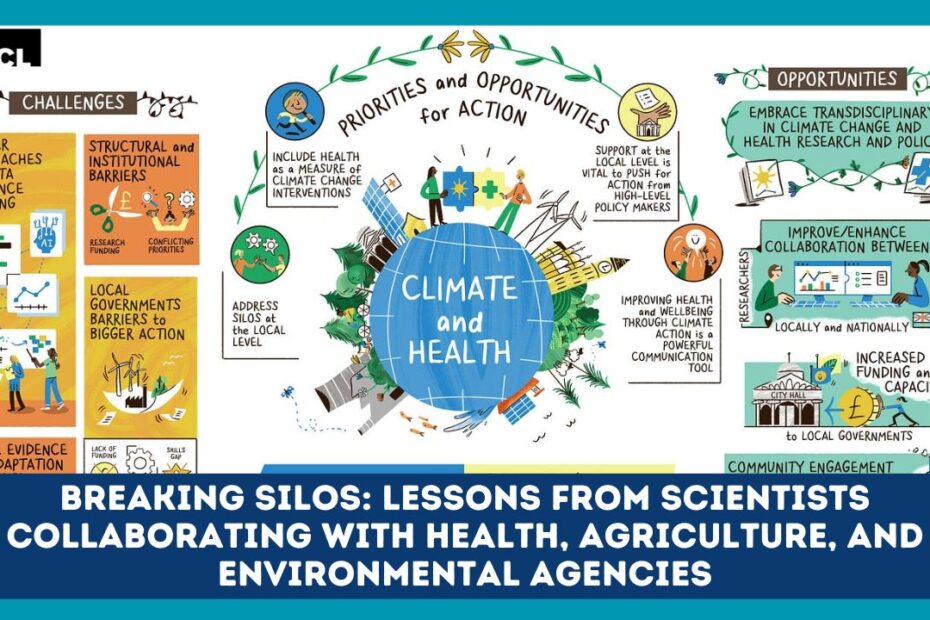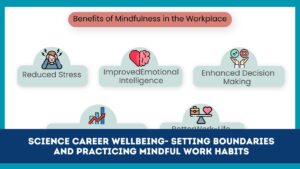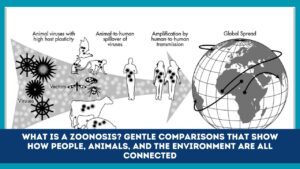In the face of complex global challenges such as climate change, pandemics, and food insecurity, interdisciplinary collaboration has emerged as a critical strategy.
Scientists working across health, agriculture, and environmental sectors are breaking down traditional silos to develop integrated solutions that address interconnected issues.
This article explores recent examples of such collaborations, highlighting their impact and the lessons learned.
The Need for Interdisciplinary Collaboration
Addressing Complex Global Challenges
Modern challenges are multifaceted, involving interrelated systems. For instance, the spread of zoonotic diseases like COVID-19 underscores the interconnectedness of human, animal, and environmental health.
Similarly, agricultural practices impact environmental sustainability and public health. Addressing these issues requires a holistic approach that integrates expertise from various disciplines.
The One Health Approach
The One Health framework exemplifies this integrated approach, emphasizing the link between human, animal, and environmental health.
This concept has gained traction globally, with organizations like the World Health Organization (WHO), Food and Agriculture Organization (FAO), and United Nations Environment Programme (UNEP) advocating for collaborative efforts to tackle health threats at the human-animal-environment interface.
Case Studies of Successful Collaborations
1. ICAR-NIBSM and Sustainable Agriculture in India
In 2025, the ICAR-National Institute of Biotic Stress Management (NIBSM) in Raipur, India, conducted an outreach program under the Viksit Krishi Sankalp Abhiyan.
Over 4,100 farmers across 49 villages were trained in sustainable farming techniques, including Direct Seeded Rice (DSR), Integrated Pest Management (IPM), and the use of biofertilizers and biopesticides.
This initiative also introduced the One Health approach, emphasizing the interconnectedness of human, animal, and environmental health.
2. MIT HEALS: Integrating Life Sciences and Technology
The MIT Health and Life Sciences Collaborative (HEALS), launched in 2024, brings together researchers from diverse fields such as life sciences, artificial intelligence, and engineering.
This collaboration aims to develop innovative solutions for healthcare challenges, demonstrating the power of interdisciplinary teamwork in addressing complex health issues.
3. UConn’s Sustainable Food Systems Initiative
Researchers at the University of Connecticut’s College of Agriculture, Health and Natural Resources published a paper in 2024 outlining sustainable food production research.
Their interdisciplinary approach integrates agriculture, health, and environmental sciences to develop sustainable food systems, highlighting the importance of cross-disciplinary collaboration in achieving food security.
Lessons Learned from Interdisciplinary Collaborations
1. Importance of Shared Goals and Vision
Successful collaborations are built on a foundation of shared objectives. Clearly defined goals ensure that all parties are aligned and working towards a common purpose, enhancing the effectiveness of the collaboration.
2. Effective Communication and Coordination
Regular communication and coordinated efforts are essential for overcoming challenges and ensuring that all disciplines contribute their expertise. Establishing clear channels of communication helps in addressing issues promptly and efficiently.
3. Flexibility and Adaptability
Interdisciplinary projects often encounter unforeseen challenges. Flexibility in approach and adaptability to changing circumstances are crucial for the success of such collaborations.
4. Mutual Respect and Understanding
Recognizing and valuing the expertise of each discipline fosters a collaborative environment where all contributions are appreciated, leading to more innovative solutions.
Challenges in Breaking Silos
1. Institutional Barriers
Organizational structures and policies can impede collaboration. Bureaucratic hurdles, funding constraints, and differing institutional priorities may hinder the establishment of interdisciplinary partnerships.
2. Cultural Differences
Disciplinary cultures can vary significantly, leading to misunderstandings and conflicts. Bridging these cultural differences requires time, effort, and a commitment to mutual respect.
3. Data Sharing and Integration
Integrating data from diverse sources poses technical challenges. Standardizing data formats and ensuring interoperability are essential for effective collaboration.
Future Directions
1. Strengthening Policy Support
Governments and institutions should create policies that encourage and facilitate interdisciplinary collaborations. Providing funding and resources for joint initiatives can promote integrated approaches to complex problems.
2. Enhancing Education and Training
Educational programs should emphasize the importance of interdisciplinary skills. Training future scientists to work across disciplines will prepare them to tackle global challenges effectively.
3. Building Collaborative Networks
Establishing networks of researchers from various fields can foster ongoing collaboration. These networks provide platforms for sharing knowledge, resources, and best practices.
Breaking down silos between health, agriculture, and environmental sectors is essential for addressing the complex challenges of the modern world.
Interdisciplinary collaborations, exemplified by initiatives like ICAR-NIBSM, MIT HEALS, and UConn’s Sustainable Food Systems Initiative, demonstrate the power of integrated approaches in developing sustainable solutions.
By learning from these collaborations and addressing the associated challenges, we can pave the way for a more collaborative and sustainable future.
Examples of Interdisciplinary Collaborations
| Initiative | Focus Area | Key Disciplines Involved | Outcome |
|---|---|---|---|
| ICAR-NIBSM Outreach Program | Sustainable Agriculture | Agriculture, Environmental Science, Public Health | Trained over 4,100 farmers in sustainable practices |
| MIT HEALS | Health and Life Sciences | Life Sciences, Artificial Intelligence, Engineering | Developed innovative healthcare solutions |
| UConn Sustainable Food Systems | Food Security and Sustainability | Agriculture, Health, Environmental Science | Proposed integrated sustainable food systems |
FAQs
1. What is the One Health approach?
The One Health approach is a collaborative, multisectoral, and transdisciplinary strategy that recognizes the interconnection between people, animals, plants, and their shared environment. It aims to achieve optimal health outcomes by addressing health threats at the human-animal-environment interface.
2. How can interdisciplinary collaborations be promoted?
Promoting interdisciplinary collaborations involves establishing shared goals, fostering effective communication, providing policy support, and encouraging educational programs that emphasize the importance of working across disciplines.
3. What are the benefits of breaking down silos in research?
Breaking down silos allows for the integration of diverse perspectives and expertise, leading to more comprehensive solutions to complex problems. It enhances innovation, efficiency, and the ability to address multifaceted challenges effectively.



